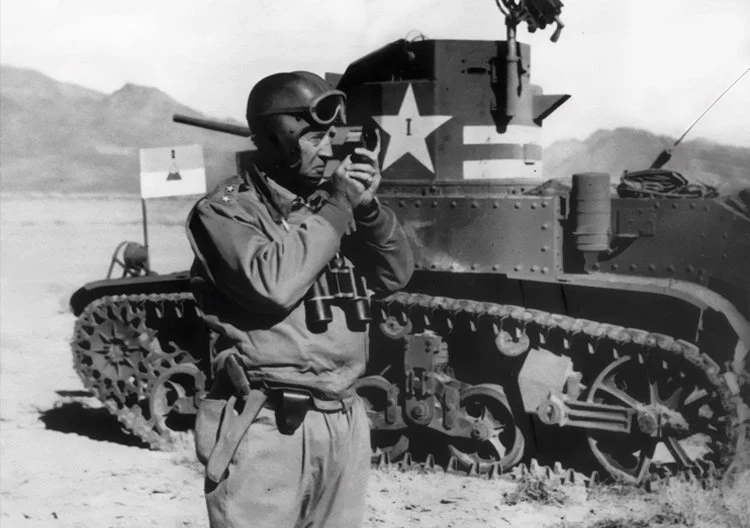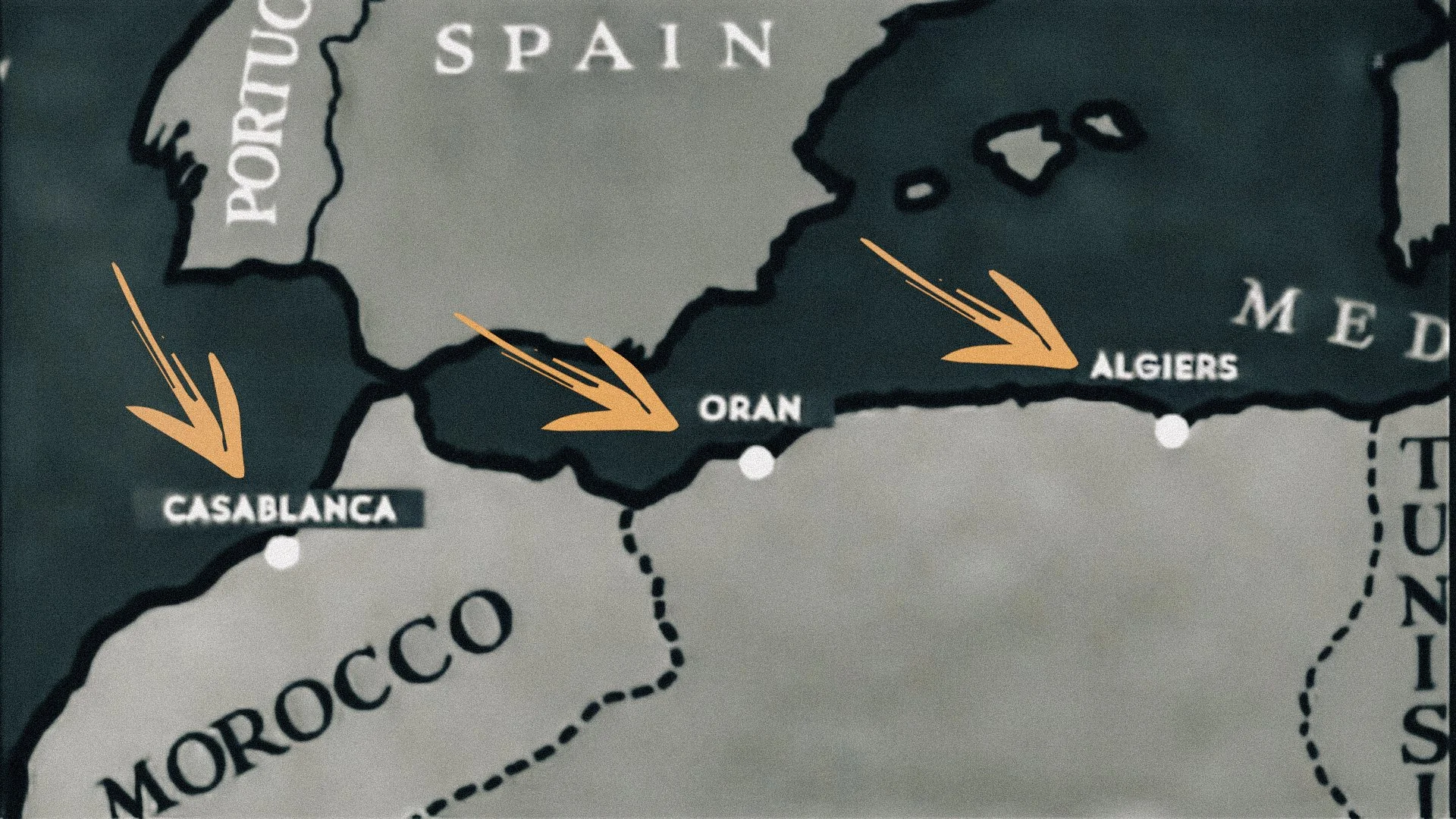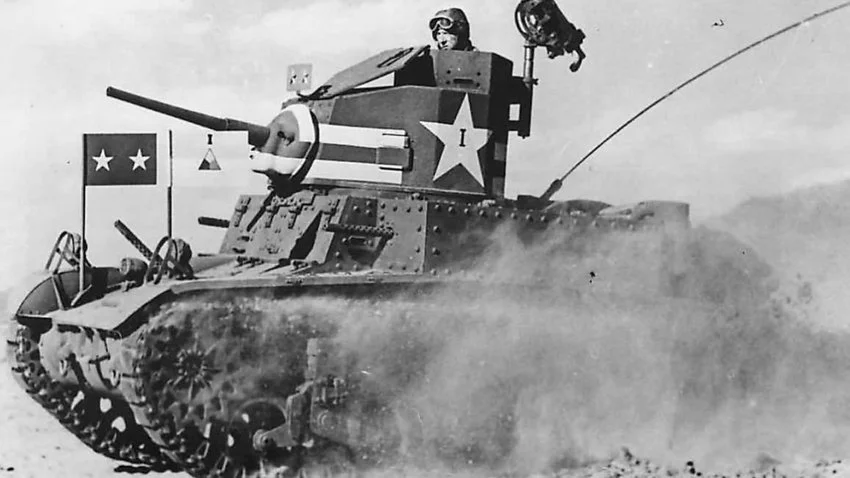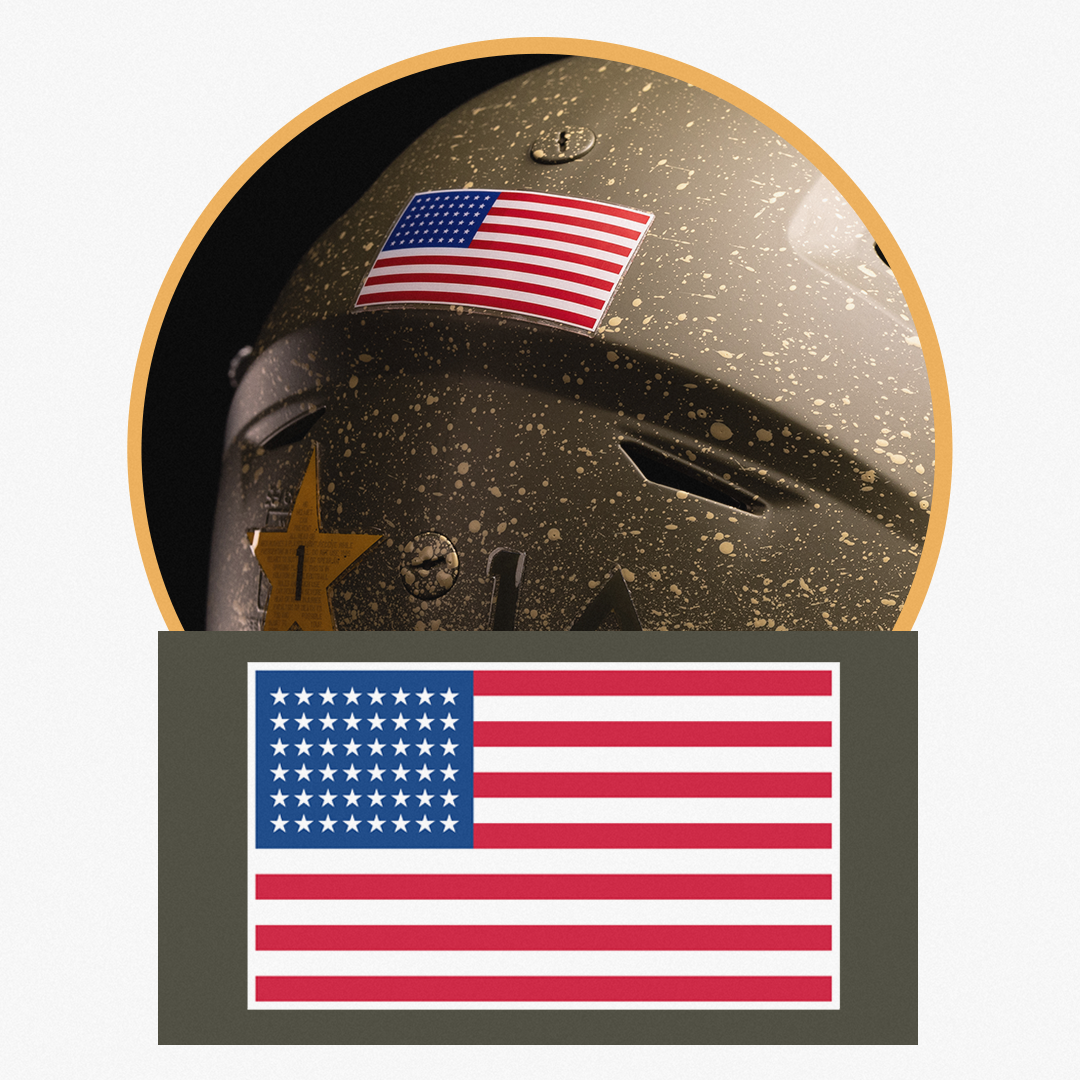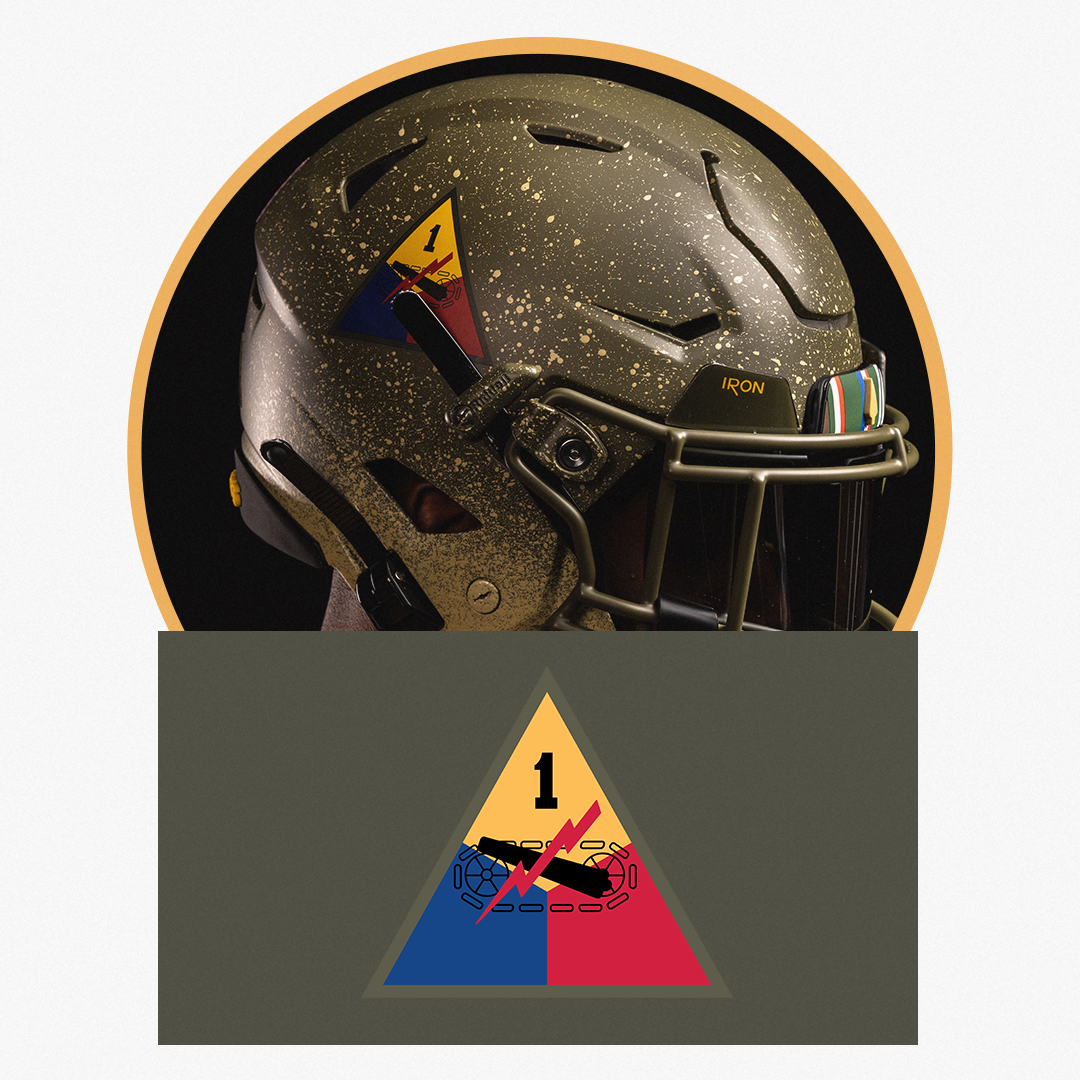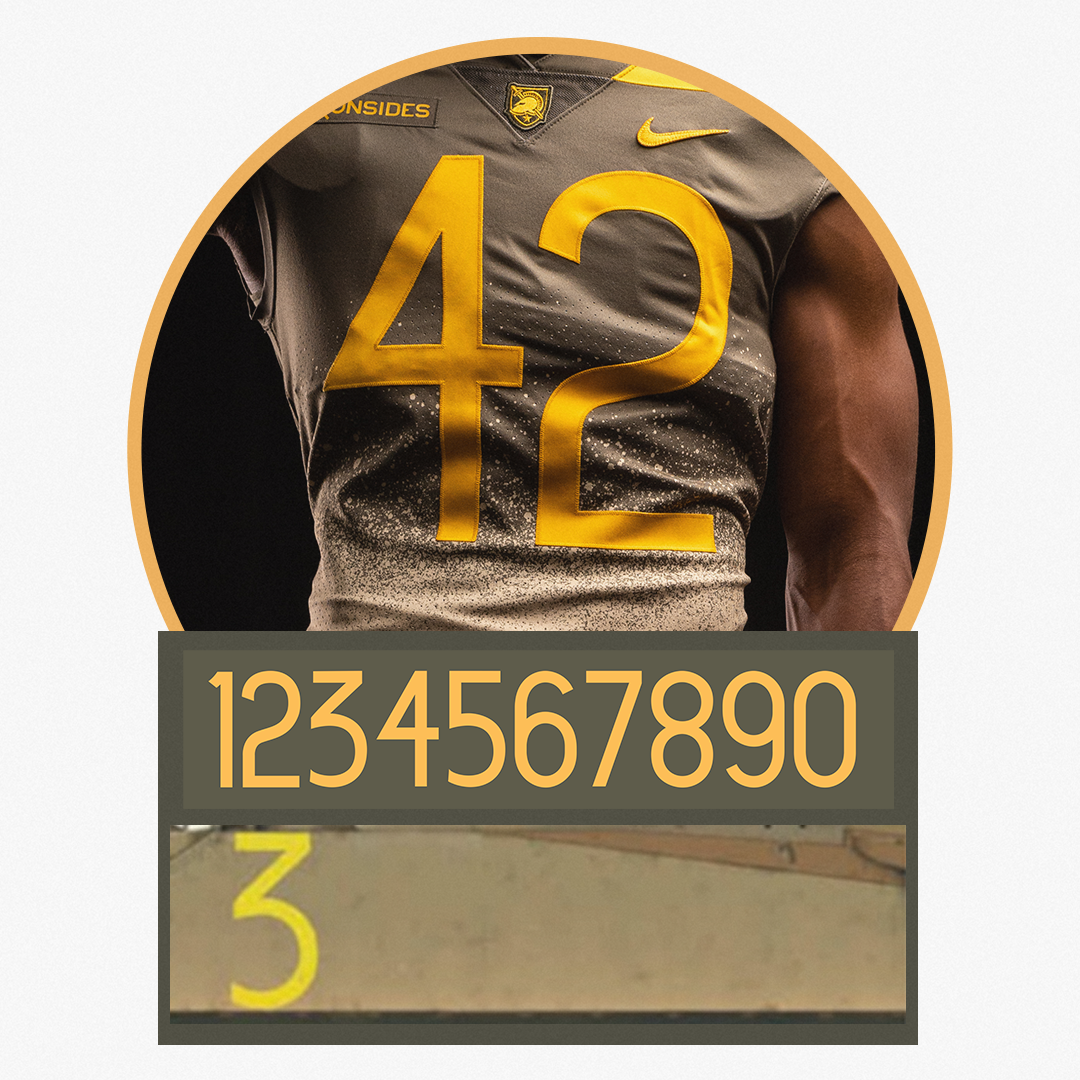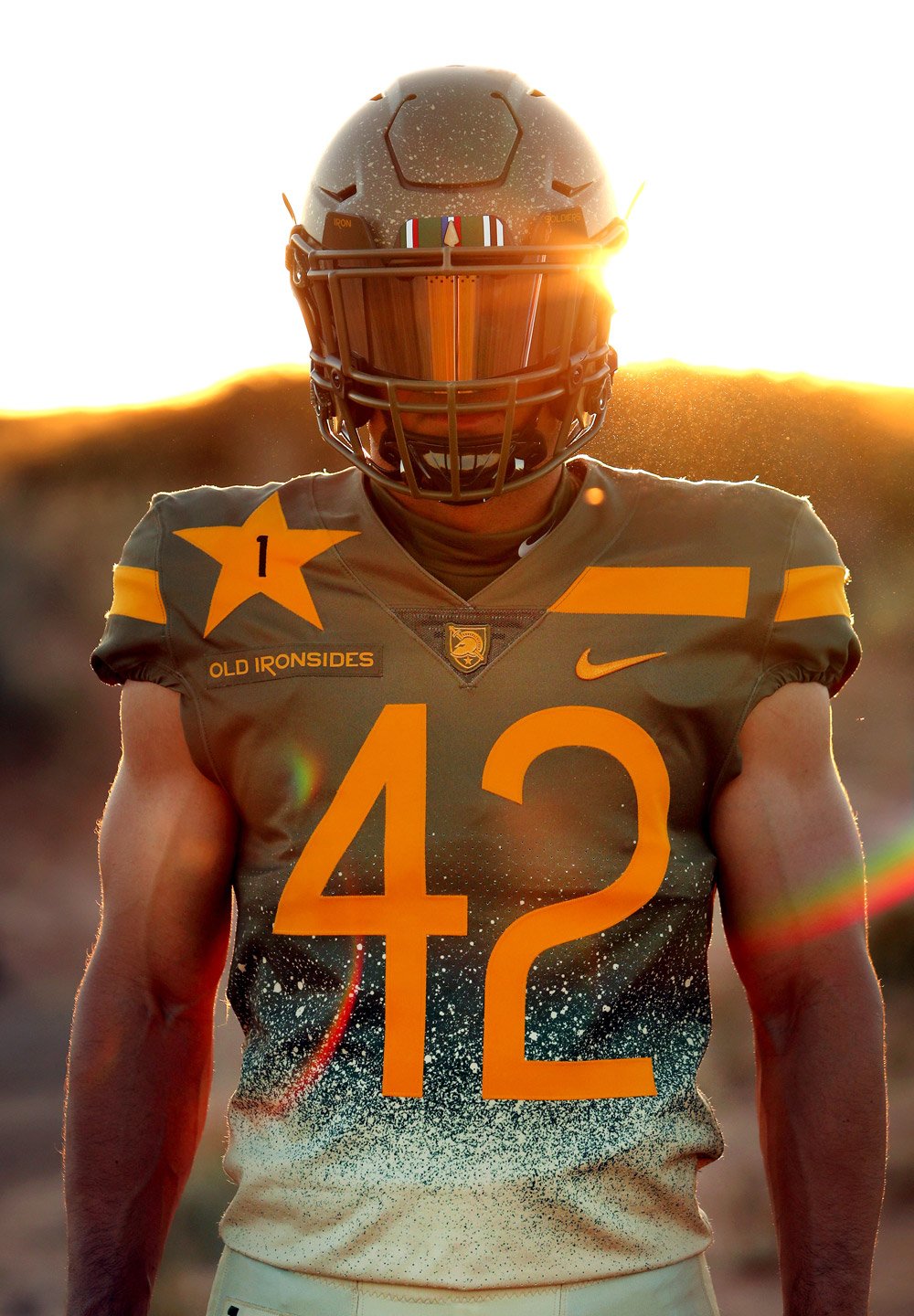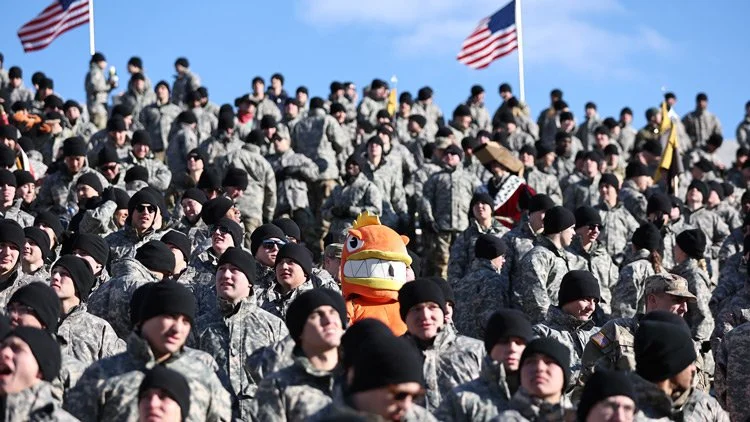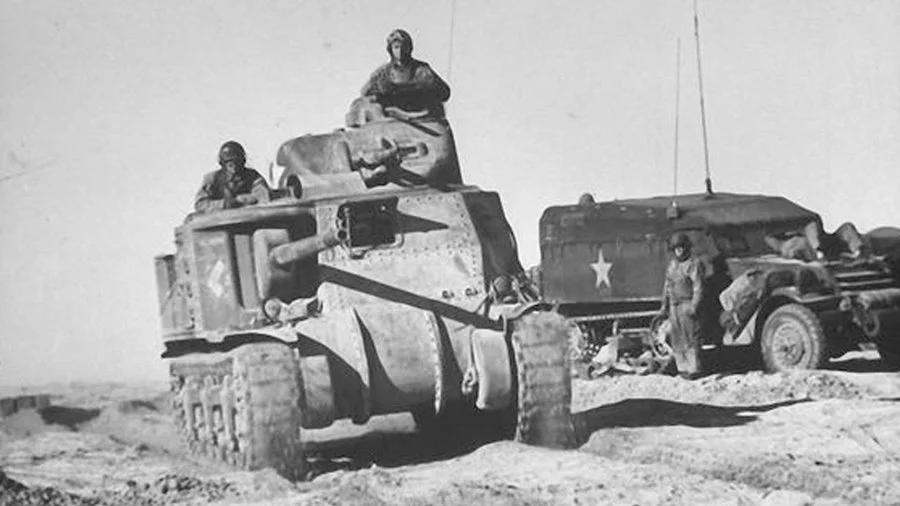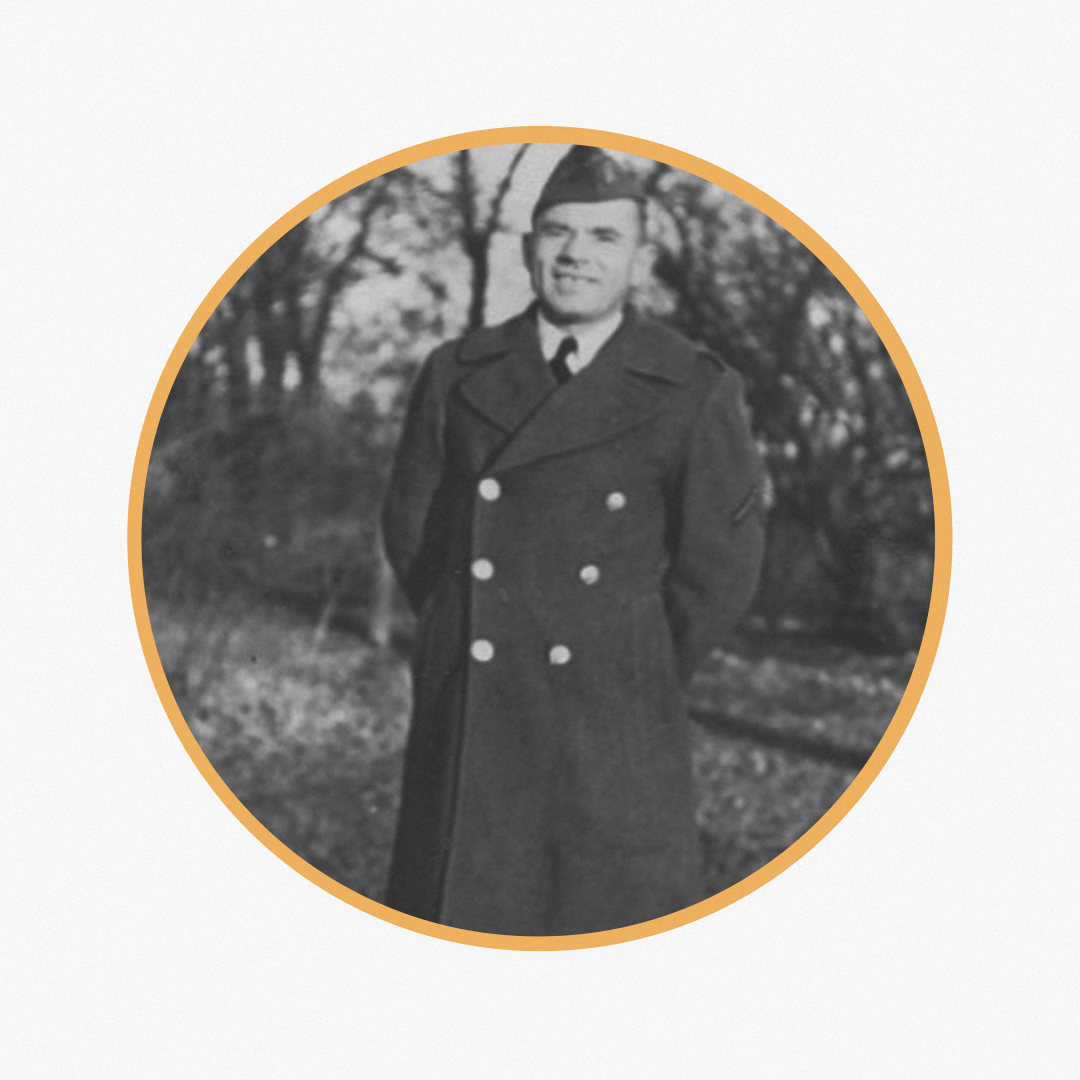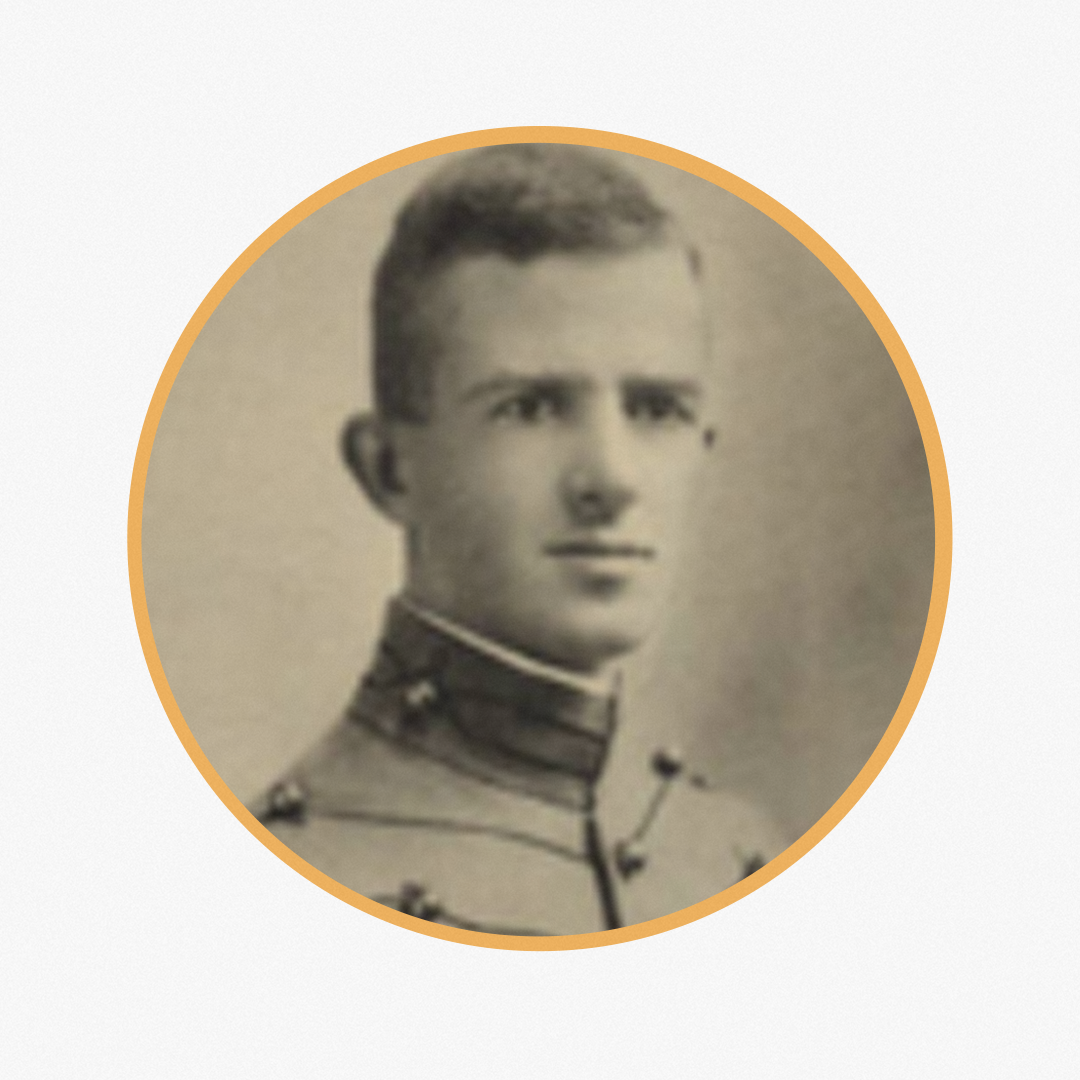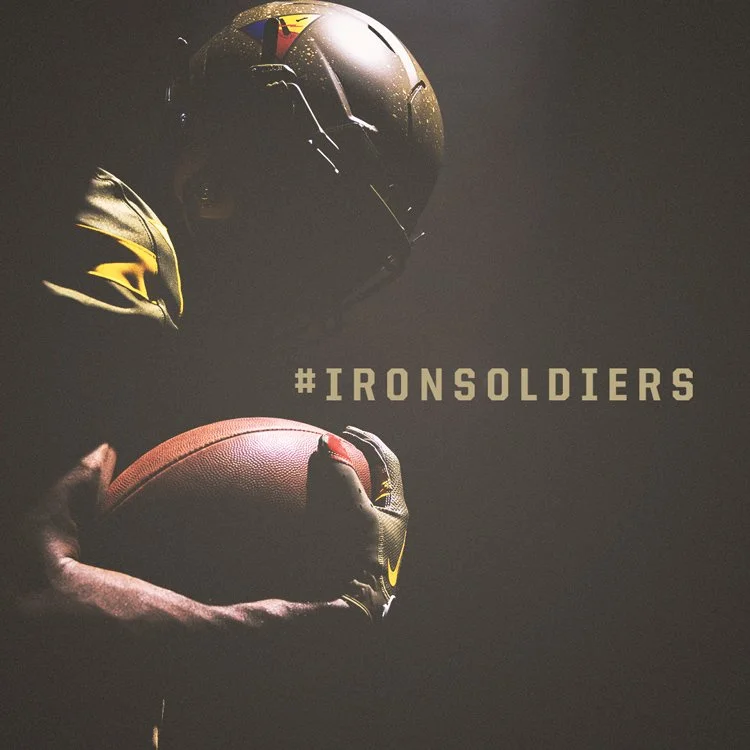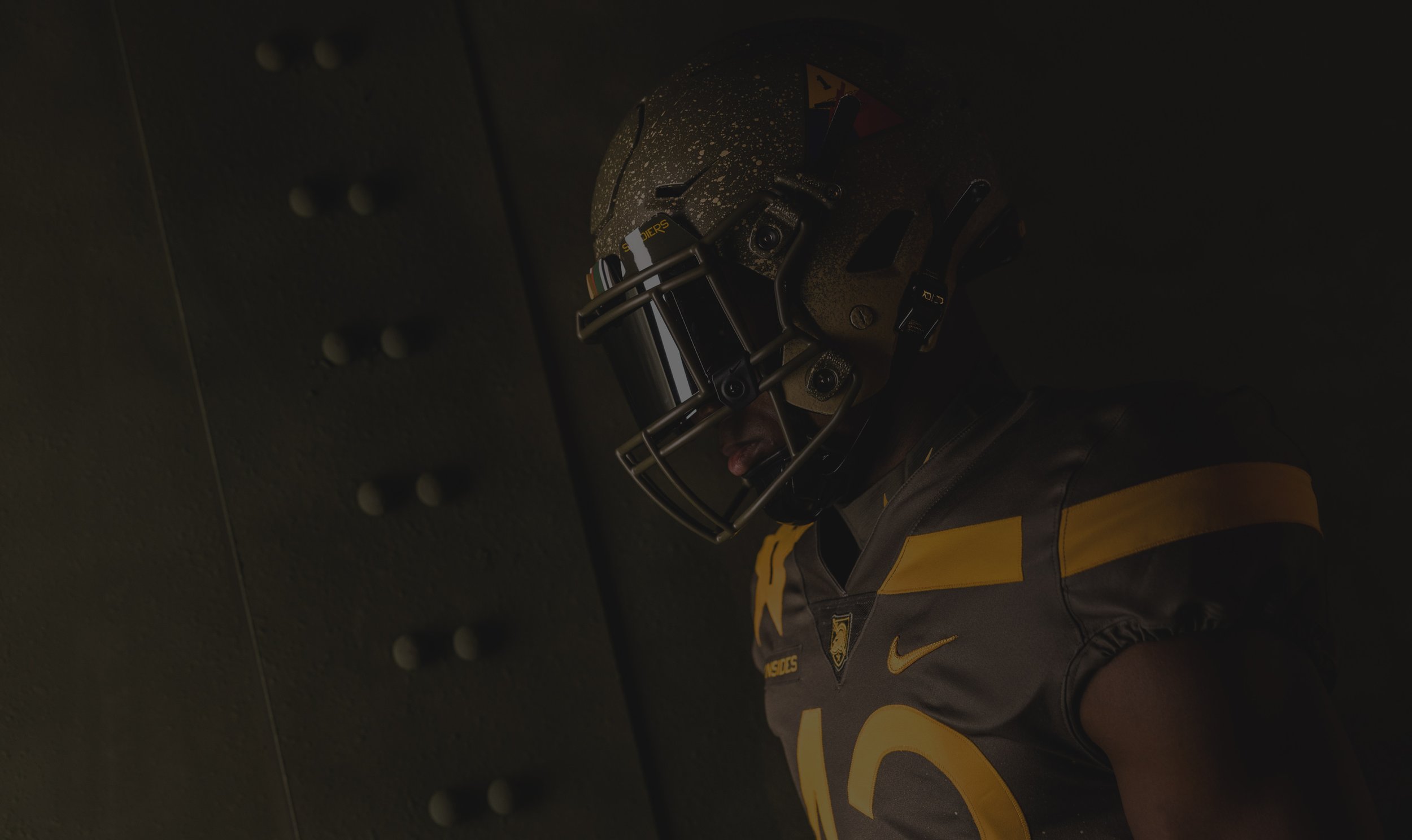
ARMY AND NIKE TEAM UP FOR 2022 ARMY-NAVY UNIFORM TO HONOR THE SOLDIERS OF THE 1ST ARMORED DIVISION
Iron Soldiers
The 2022 Army-Navy Uniform tells the story of the soldiers of the 1st Armored Division during World War II. This year marks the 80th anniversary of Operation Torch and the commencement of American ground operations against Axis forces in the European theater, which included North Africa.
Operation Torch marked the 1st Armored Division’s entry into the crucible of combat. The resilience, grit, and commitment demonstrated by the soldiers ultimately resulted in the defeat of Axis forces in North Africa. In the harsh desert against a determined enemy, the members of the 1st Armored Division were forged into “Iron Soldiers” and learned the lessons that would guide them to success in subsequent operations in Italy and Western Europe.
On December 10, we honor the “Iron Soldiers” of the 1st Armored Division and take the field in Philadelphia inspired by the story of “Old Ironsides.” In honor of their legacy, we proudly wear their patches and adopt their mottos to propel us to victory on the field of friendly strife.

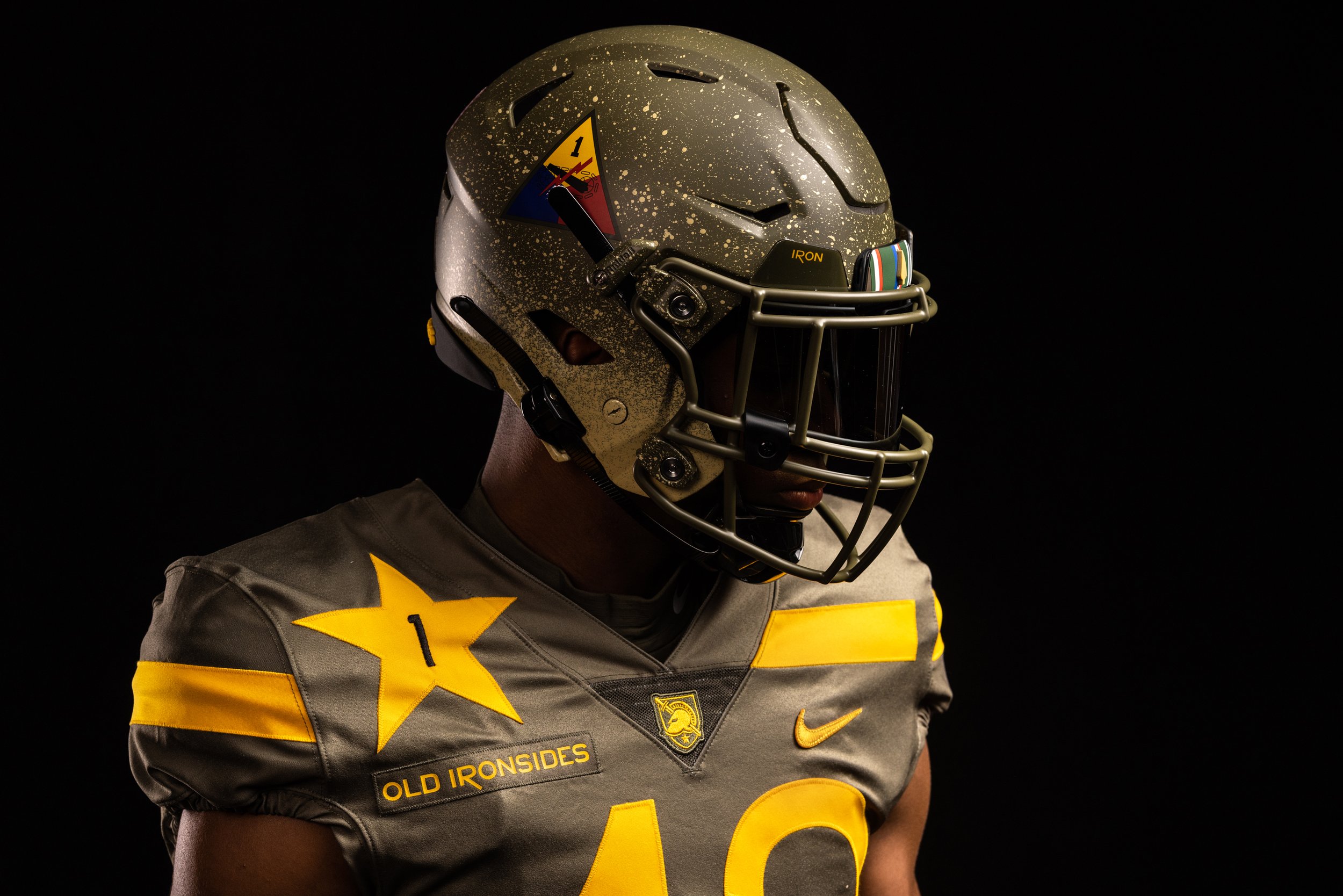
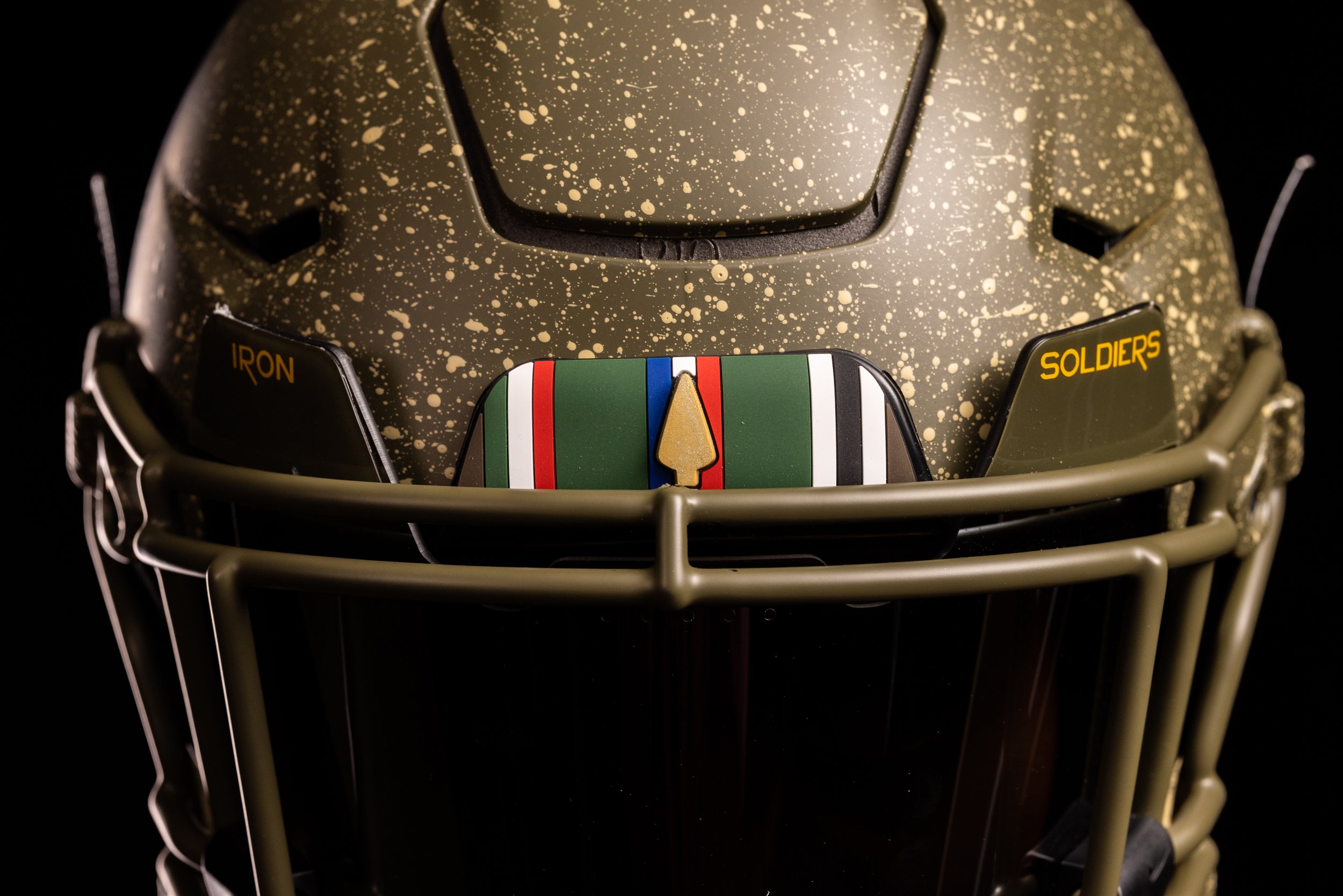
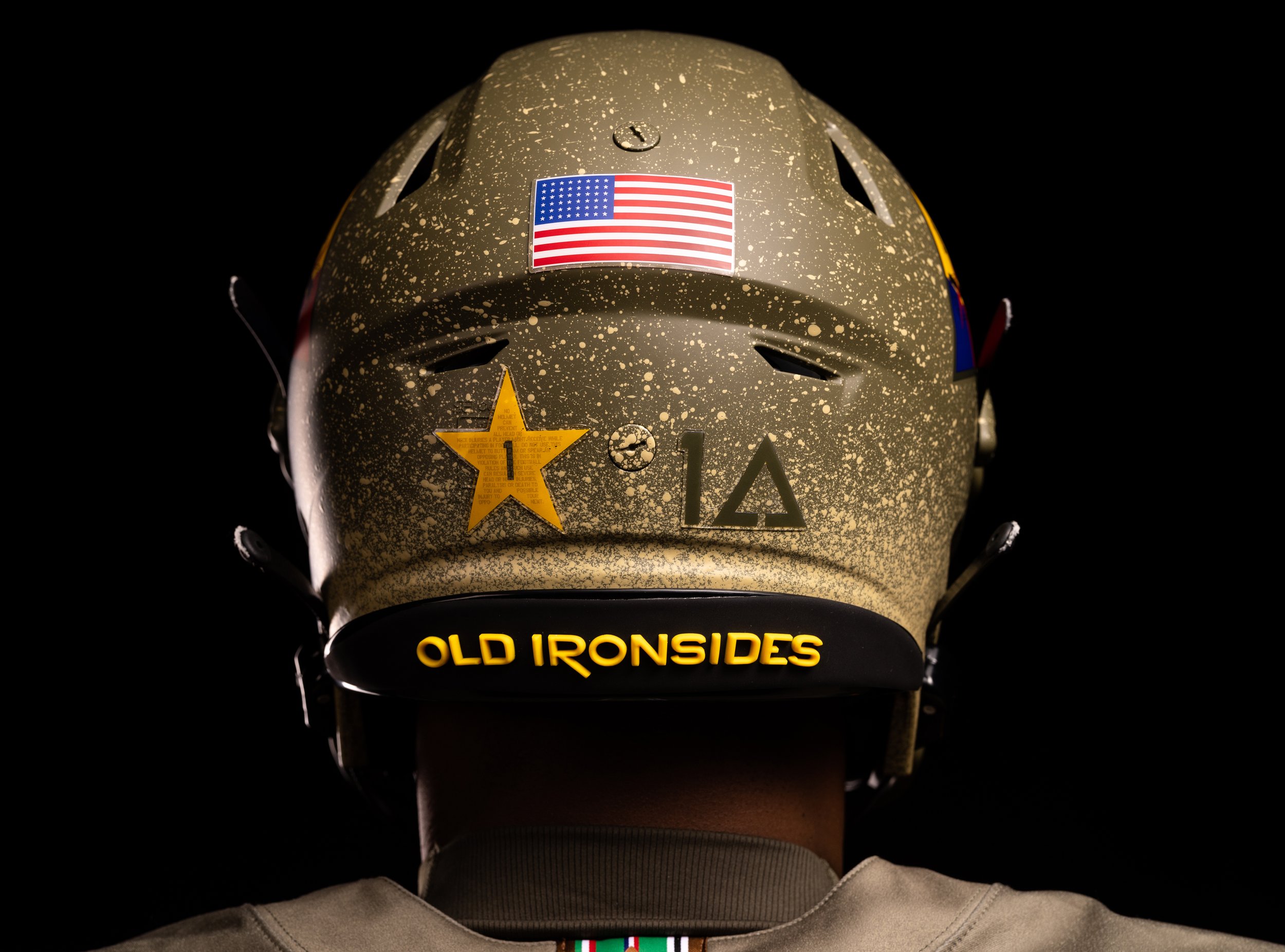
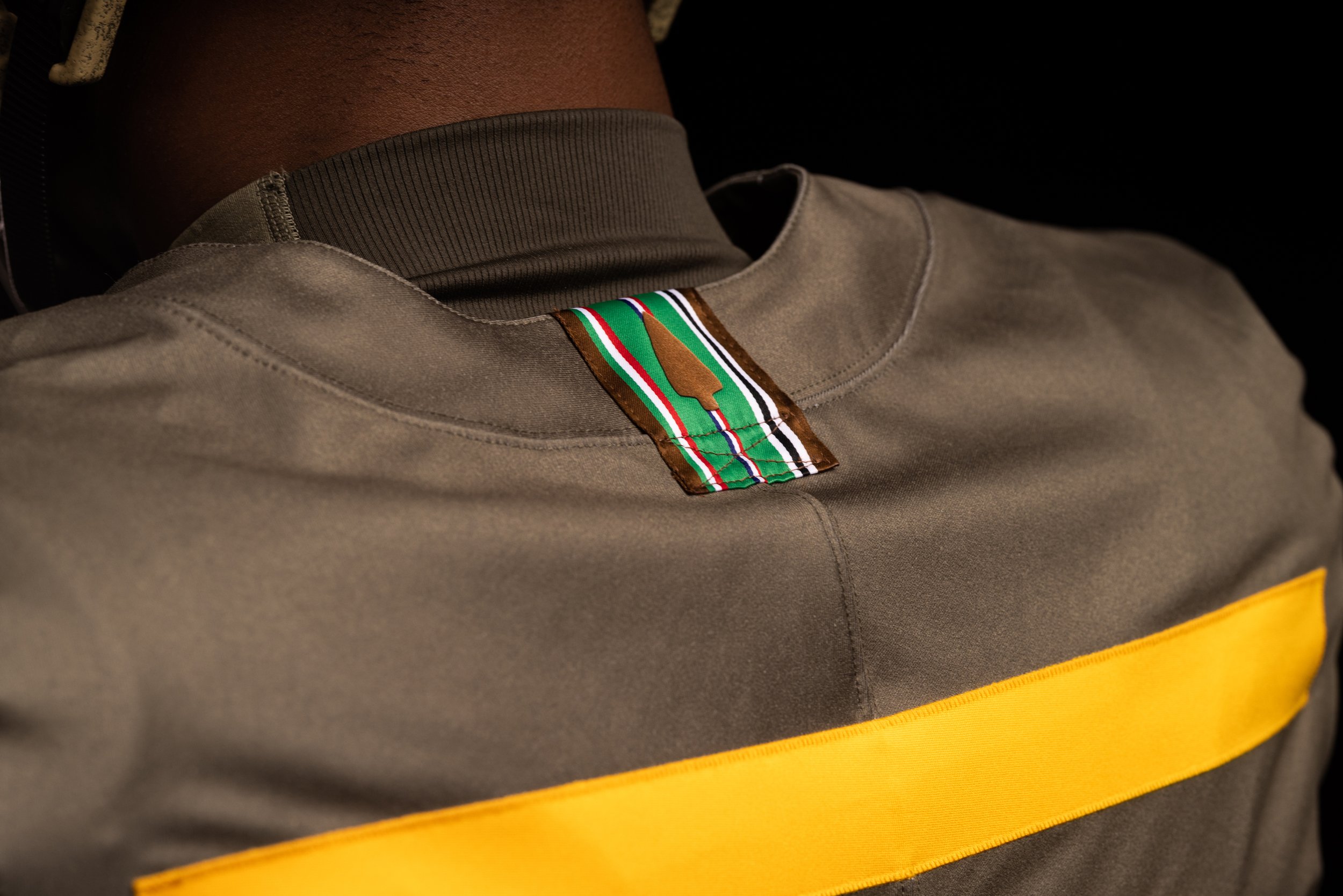
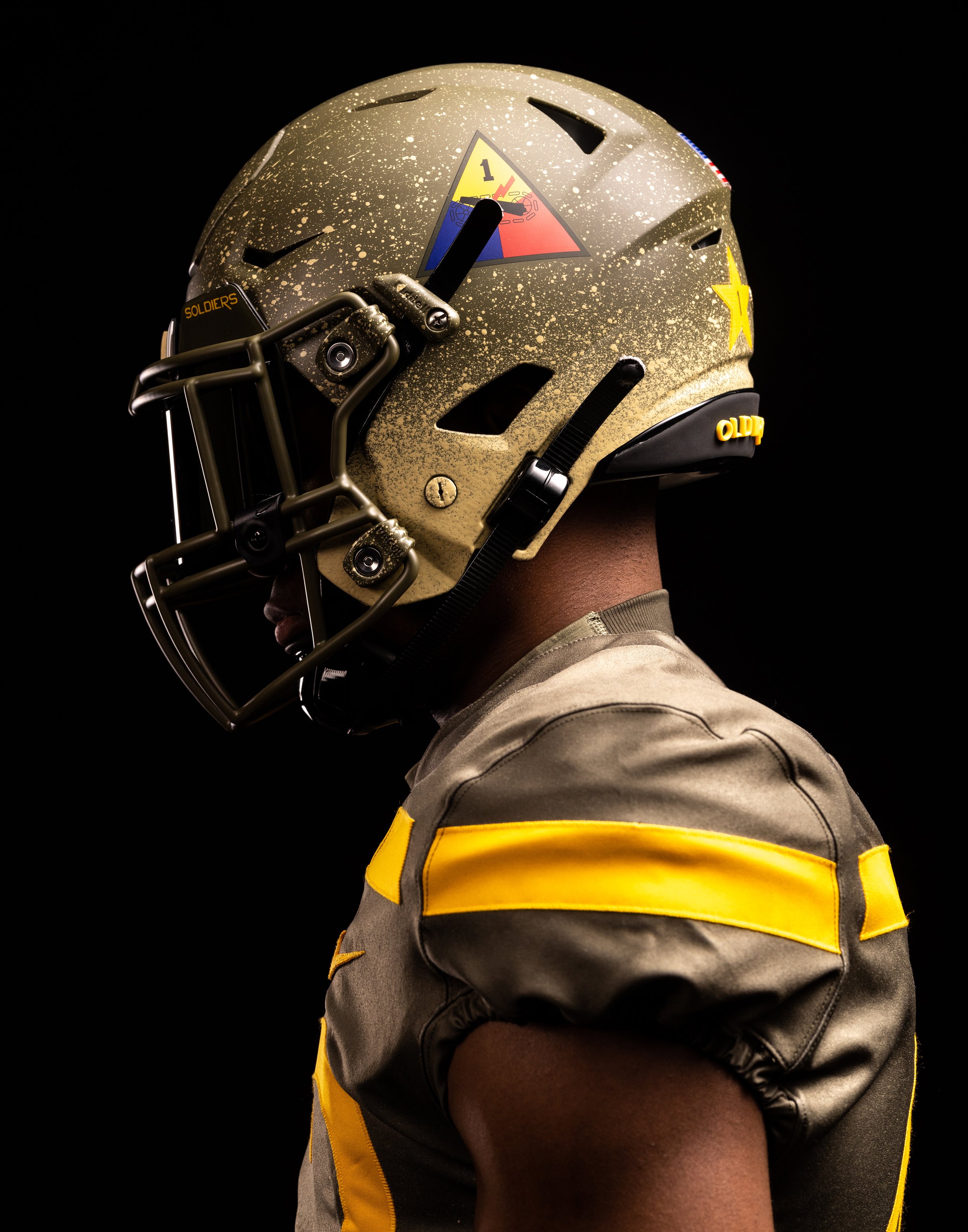



Operation Torch And North Africa
Within weeks of the attack on Pearl Harbor on December 7, 1941, President Franklin Roosevelt, and British Prime Minister Winston Churchill settled on a policy of defeating Germany first, before turning their attention to defeating the Empire of Japan. American military leaders sought a cross-English Channel invasion into Europe in early 1943 but acquiesced to a British strategy of attacking along the periphery of Europe in North Africa while Allied forces built up enough personnel and war material for a cross-Channel invasion in the future.
On November 8, 1942, Operation Torch commenced with the amphibious landings in French Morocco and Algeria. It was the largest amphibious operation in history to that point, with vessels sailing from the United States and Great Britain carrying nearly 125,000 Allied soldiers. Operation Torch planners, led by Lieutenant General Dwight Eisenhower, identified three landing sites near the cities of Casablanca, Oran, and Algiers that held critical ports, airfields, and infrastructure that would be crucial for the success of the amphibious invasion and the subsequent North African Campaign. The Torch landings were initially met with stiff resistance by Vichy French forces, but after days of fighting, the Vichy French capitulated and the Allied foothold in Northwest Africa was secured.
The amphibious landings by Allied forces were conducted in conjunction with British efforts in Egypt and Libya. The Allied armies, including the American 1st Armored Division led by Major General Orlando Ward, converged upon Axis forces in Tunisia, entering the crucible of combat against German and Italian forces for the first time. At the Battle of Kasserine Pass in February 1943, American forces sustained multiple German assaults that nearly resulted in defeat of the American II Corps. Elements of the 1st Armored Division held firm, buying time for the arrival of critical reinforcements, which halted and reversed the German offensive.
The soldiers of the 1st Armored Division, incorporating lessons learned from the Battle of Kasserine Pass, displayed their competence and discipline at the Battle of El Guettar in March-April 1943. Elements of the 1st Armored Division secured key terrain near El Guettar and repulsed the ensuing Axis offensive. After this American victory, Allied forces converged in Tunisia and initiated offensive operations that destroyed the final Axis defensive belts in Northwest Africa.
Allied forces continued their coordinated assault in Tunisia with American forces, including the 1st Armored Division, now under Major General Ernest Harmon, attacking the city of Bizerte while British forces attacked the Axis stronghold of Tunis. Axis resistance ended on May 13, 1943, with the Allies capturing over 230,000 Axis prisoners of war. By this point the U.S. troops had developed into hardened veterans. The opposing German commander, Erwin Rommel, wrote that “the Americans had fought brilliantly.” Victory in North Africa was the critical first step in the defeat of Axis forces in the European Theater.
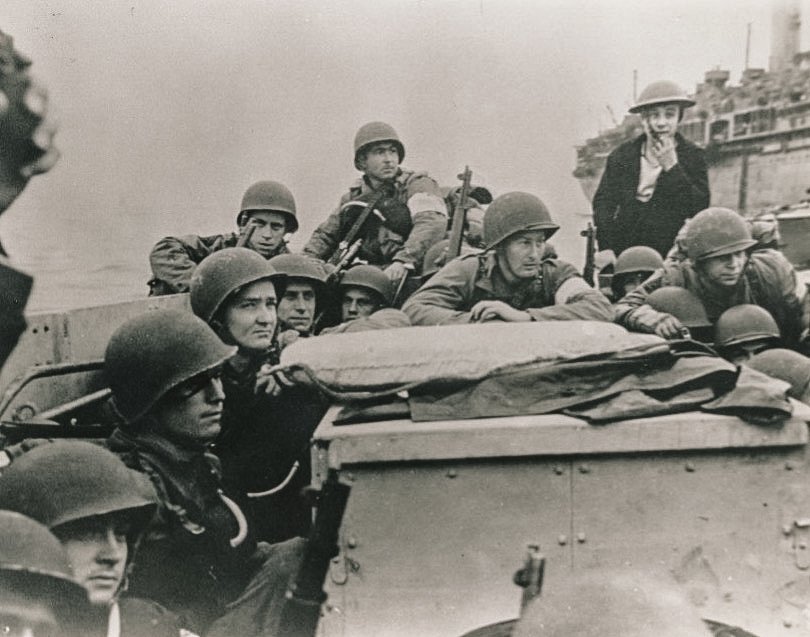
2022 Uniform Inspired Features
The Corps of Cadets
This year’s uniform not only highlights the legacy of the 1st Armored Division during Operation Torch and the North Africa Campaign but connects the rest of the Corps of Cadets with the players on the field. On the field of friendly strife, the Army players carry with them their cadet regiment and company names, bringing the spirit of the Corps on the field with them.
THE DIVISION ORIGINS
On July 15, 1940, the 1st Armored Division was formed from a collection of cavalry and reconnaissance units at Fort Knox, Kentucky. Organized with an emphasis on combined arms, the 1st Armored Division integrated armor, infantry, and field artillery into a cohesive unit, ready to succeed on the battlefields of World War II. The unit patch symbolizes this cohesion by incorporating tricolors of cavalry yellow, infantry blue, and red field artillery.
America’s Tank Division
The 1st Armored Division trained in Louisiana and in the Carolinas in 1941 prior to deploying to Northern Ireland in May 1942. There the division prepared for Operation Torch, the Allied invasion of North Africa on November 8, 1942. After participating in the advance across North Africa and seizure of Tunisia, Iron Soldiers fought in mainland Italy before participating in the occupation of Germany after World War II.
In the years following World War II, the 1st Armored Division played a vital role in the Cold War. The division participated in large-scale joint exercises in the 1950s, supported American interests during the Cuban Missile Crisis in 1962, and served as a defender of freedom while positioned in West Germany in the 1970s and 1980s.
Iron Soldiers served with distinction during Operation Desert Storm in 1991, tackling the most elite divisions of Saddam Hussein’s Republican Guard. Iron Soldiers deployed in support of operations in the Balkans between 1995 and 1999 to help keep the peace in a volatile region of Europe.
During the Global War on Terror, 1st Armored Division soldiers deployed to Iraq and Afghanistan in support of multiple operations of national interest. In 2011, the 1st Armored Division uncased their colors, signifying its official move from Germany to Fort Bliss, Texas, where the division continues to serve today.

Select Notable Units of the 1st Armored Division
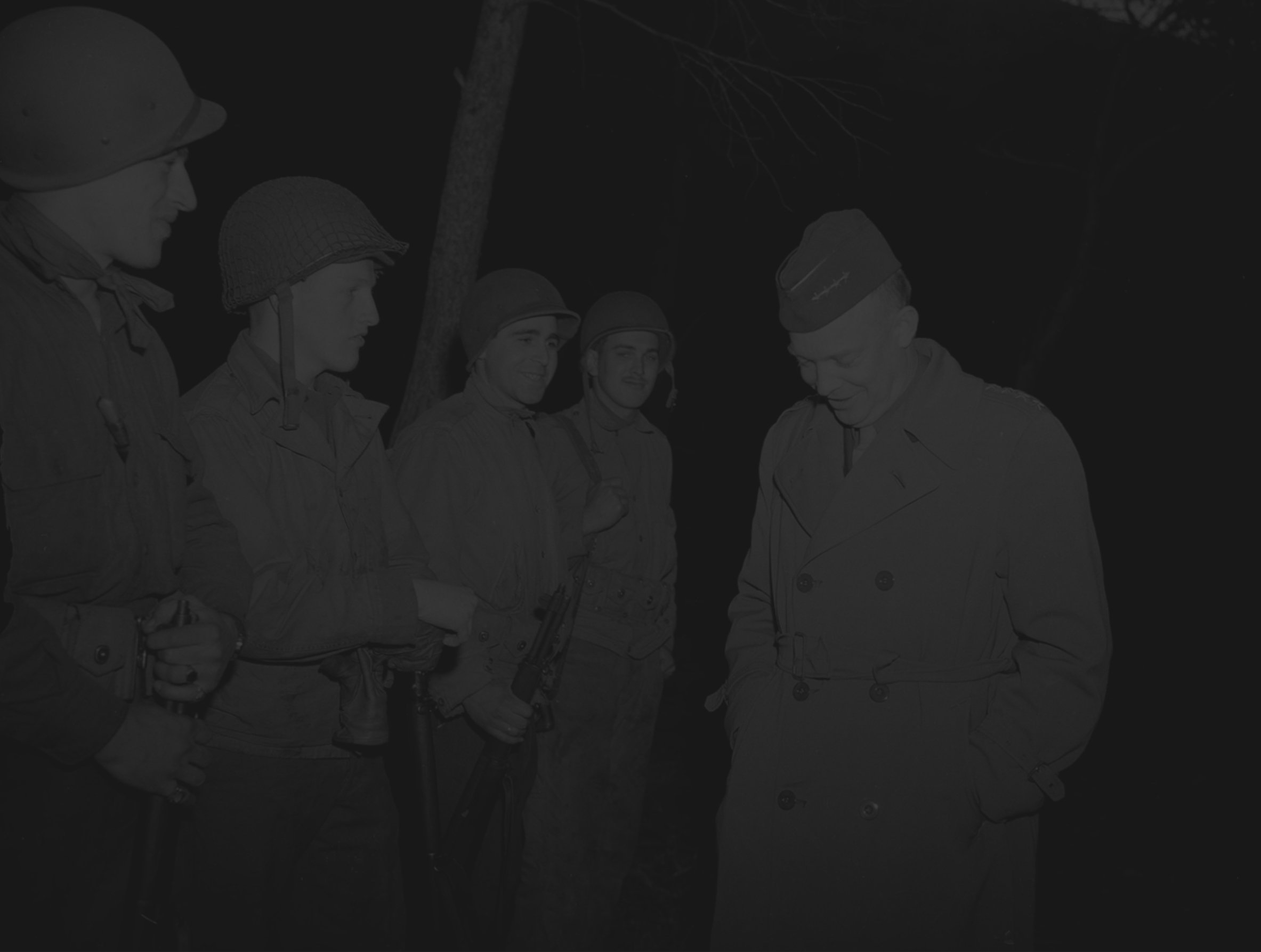
Notable Biographies
Your Story
Do you have a relative or someone close to you who served with the 1st Armored Division? Post on Twitter using #IRONSOLDIERS and your post could be featured here!
Posts must be publicly viewable and NOT set to private sharing setting. Photos are encouraged!
3rd Plt - C-Co - 4/17 Inf - 1/1 AD Arghandab, Afghanistan 2012-2013 #IronSoldiers pic.twitter.com/uUxwPJuzqJ
— Kevin Shaffer (@kas233304) November 29, 2022
2/1AD 1-6 INF Baumholder ,Germany 05-10 !! Go Army beat Navy !! #IronSoldiers pic.twitter.com/uMFZRl27VF
— Frankie Acevedo 📶 (@ace292325) December 2, 2022
Me. Iron Soldier 1989-94.
— Paul J. Jacobsmeyer (@pjjakefour) December 2, 2022
#IronSoldiers I served with 1AD’s Target Acquisition Battery, B25, during Desert Storm.
— Chuck Flint (@NitroBro2) December 1, 2022
Joe Craver, 6th Armored Infantry Regiment, 1st Armored Division, Italian Campaign from 1943-45. Bronze Star. My Dad and my hero! #IronSoldiers pic.twitter.com/3QDSHUAc00
— Bradd Craver (@Deacs1983) December 2, 2022
#IronSoldiers My husband served with 1 Armored division at Fort Riley from 1995 until 2006 when they were moved to Fort Bliss. He is the 4th generation in his family to serve with them.
— Angela Fisher (@AngelaD43472060) December 7, 2022
In 2017 My daughter met with Warren Nicely, 1st Armored Division, 69th armor regiment, 95 years old, and CPL Willie Wilhitte, Marine Corps tanker, both WW2 combat tankers! Both had some good stories to tell. What a day!!! pic.twitter.com/Ht5HlkxA9v
— Karlen Morris (@MorrisKarlen) December 6, 2022
My Grandpa, Jerry Hinds, served in the @1stArmoredDiv‼️Him, @Yukongreely75, and my many veteran family members are the ones who inspired my interest in a service academy‼️ #IronSoldiers #GoArmy #BEATnavy @goblackknights #runsinthefamily #VeteransDay @CoachDDixon @CoachJeffMonken pic.twitter.com/y9xOzxFjYG
— James Hinds (6’3” 260) (@Hinds_football) December 5, 2022
I served with the 1/2 ACR...Germany..patrolled the East German /Czech border...
— Jeffrey winowitch (@Jeffreywinowit2) December 6, 2022
1st PLT, Apache Trp, 2-13 Cav, 3ABCT, circa 2016, Middle East #IronSoldiers pic.twitter.com/Sigh4CRorb
— ajschmitty (@schmitthead97) December 6, 2022
#IronSoldiers My husband served with 1 Armored division at Fort Riley from 1995 until 2006 when they were moved to Fort Bliss. He is the 4th generation in his family to serve with them.
— Angela Fisher (@AngelaD43472060) December 7, 2022
Before we start our HBL my G-3 Fires family and our friends gathered for an office holiday potluck lunch today. Beyond doubt, it was gratifying to share wholesome laughter with our teammates—what an exquisite time!🎄💥#TeamBliss #IronSoldiers#1stArmoredDivision#RedLeg#13A pic.twitter.com/js3Bgv8gh6
— Maria E. l Millenial l Digital Marketer (@sharetheredpen) December 3, 2022
Friedberg Germany 93-96 #IronSoldiers #operationjointendeavor #IFOR #RayBarracks pic.twitter.com/5slUC3w788
— David Wood (@dwoodpa) December 3, 2022
2/1AD 1-6 INF Baumholder ,Germany 05-10 !! Go Army beat Navy !! #IronSoldiers pic.twitter.com/uMFZRl27VF
— Frankie Acevedo 📶 (@ace292325) December 2, 2022
C Co 501st, 1-1 Ad, 2008-2013. Go Army, Beat Navy! #IronSoldiers pic.twitter.com/emLpEoyAei
— Charlotte Marks (@CharlieMarks85) December 10, 2022
Honored to serve as a Tank Platoon Sergeant and Master Gunner in @1stArmoredDiv Three of the most challenging and rewarding years in my career with some the best Americans out there. #IronSoldiers pic.twitter.com/A71AzDhBCf
— Elijah Sexton (@TNtanker) December 10, 2022
I served in the @1stArmoredDiv and it was fun to highlight unit Army-Navy Game vids tonight on @WTFNationRadio . @TheWTFNation was in full Army spirit and I even had some wardrobe changes with the new uniform design. #IRONSOLDIERS #GoArmyBeatNavy https://t.co/ALAaTsbeFD pic.twitter.com/bzfkDxDZvr
— Grand Admiral of Propaganda (@TheIOGuy) December 9, 2022
@1stArmoredDiv in Bosnia-Herzegovina circa 1997 #IronSoldiers #BulldogBrigade pic.twitter.com/4MOBIq9J8Z
— Kirk Luedeke (@kluedeke29) November 28, 2022
#IronSoldiers #ReadyFirst https://t.co/EfliABMHxb pic.twitter.com/Hi2Lm9YYUK
— Maggie Phillips (@maggiemphillips) November 29, 2022
Be like Bo! Go Army! #IronSoldiers pic.twitter.com/rIVlA5WNO4
— Sarge💙 (@ZBlime) November 29, 2022
My Dad served with @1stArmoredDiv in WWII from 1943-45 in the Italian Campaign. #IronSoldiers #GoArmy #BEATnavy pic.twitter.com/kaPTdqDQie
— Jim Beale (@JimBeale) December 1, 2022
My dad served has 1st AD CSM in Ansbach, Germany 79-82 (2nd from left in pic) and so did my nephew with 1st AD at Fort Bliss (retired in 2019) #IronSoldiers #GoArmy #BeatNavy pic.twitter.com/rHY37Z2UWY
— carrie campbell (@pigcarrie) December 1, 2022
#IronSoldiers GO ARMY beat navy! pic.twitter.com/VvcyHZEPLl
— Captmoonlite77 🇺🇸🇮🇪 (@captmoonlight77) November 30, 2022
I served with @1stArmoredDiv from 2009-2012 including a deployment to Qatar in 2010. Met some of my best friends in 1AD. Also dominated some flag football #GoArmy #BeatNavy @ArmyWP_Football #IronSoldiers pic.twitter.com/UQA9tgmj2f
— Aaron Wilkie (@awilkie7) December 7, 2022
I served with the 1/2 ACR...Germany..patrolled the East German /Czech border...
— Jeffrey winowitch (@Jeffreywinowit2) December 6, 2022
I served in 1st AD from 88-93 while they were still in Germany.
— Mark Buchholz (@MABuck3) December 5, 2022
My wife and i were both in the 1AD Band in 2001-2004.
— The Real Doug Lane (@TheRealDougLane) December 7, 2022
Yes, I served as n the @1stArmoredDiv in Vilseck Germany, 501st Support Battalion 1990-Gulf War, then deactivated, went @3rd_Infantry
— Steve Hillis (@44stevesr) December 5, 2022
Brother served in 2-81 Armor, Erlangen. #IronSoldiers pic.twitter.com/bBPJechUqe
— OldRabbleLore (@OldRabbleLore) December 6, 2022
Joe Craver, 6th Armored Infantry Regiment, 1st Armored Division, Italian Campaign from 1943-45. Bronze Star. My Dad and my hero! #IronSoldiers pic.twitter.com/3QDSHUAc00
— Bradd Craver (@Deacs1983) December 2, 2022
My dad served has 1st AD CSM in Ansbach, Germany 79-82 (2nd from left in pic) and so did my nephew with 1st AD at Fort Bliss (retired in 2019) #IronSoldiers #GoArmy #BeatNavy pic.twitter.com/rHY37Z2UWY
— carrie campbell (@pigcarrie) December 1, 2022
Today, @ArmyWP_Football will wear uniforms representing @1stArmoredDiv.
— MarkHertling (@MarkHertling) December 10, 2022
In 2016, it was an honor to stand with 3 other 1st Armored Division combat commanders: Gen Fred Franks, Gen @Martin_Dempsey & Gen Ron Griffith.
All #IronSoldiers, past & present, say #GoArmyBeatNavy ! pic.twitter.com/6CeTr60xzF
#IronSoldiers pic.twitter.com/OzFf6hE0TH
— Dax Bishop (@dbishop45) November 29, 2022
My grandfather’s division when he went to Europe during WWII. https://t.co/LZoPt9grxT
— Stephen Cranford (@stephencranford) November 29, 2022
#IronSoldiers https://t.co/0MYQk5LzFR pic.twitter.com/eKyCruVga0
— Literally Sean Bannon (Post-Command Arc) (@LiteralSheridan) November 29, 2022
The “Ready First” S3 Captains, Baghdad, 2003#IronSoldiers pic.twitter.com/8ng7FLu7TL
— USACAPDOC (@usacapdoc1) November 29, 2022
Great grandfather Raymond Coleman!!! 🇺🇸🇺🇸🇺🇸 pic.twitter.com/74jWZb34aD
— Brett Coleman (@brettcoleman_10) December 1, 2022
#IronSoldiers I served with 1AD’s Target Acquisition Battery, B25, during Desert Storm.
— Chuck Flint (@NitroBro2) December 1, 2022
#IronSoldiers pic.twitter.com/ztsLuwwFGQ
— Anne Baki (@AnneBaki1) November 30, 2022
1st Armored Division, 2-29FA, 4th Platoon. COB Adder, Iraq. #IronSoldiers performing QRF duties hoah! pic.twitter.com/nTAiXzzYPH
— Wesfmradio (@wesfmradio) November 30, 2022
This year’s @ArmyWP_Football uniforms for the Army v Navy game honor the @1stArmoredDiv and they look awesome! Had the honor of serving with A Btry, 6-3 ADA, 1st AD out of Schwabach Germany! #Blacksheep #OldIronsides #DesertStorm #IronSoldiers #GoARMY #BEATnavy #HOOAH https://t.co/CYzcqRaVIo pic.twitter.com/nNdwfmPGRp
— IrishStephen (@NDIrishFan_72) December 5, 2022
This year’s @ArmyWP_Football uniforms for the Army v Navy game honor the @1stArmoredDiv and they look awesome! Had the honor of serving with A Btry, 6-3 ADA, 1st AD out of Schwabach Germany! #Blacksheep #OldIronsides #DesertStorm #IronSoldiers #GoARMY #BEATnavy #HOOAH https://t.co/CYzcqRaVIo pic.twitter.com/nNdwfmPGRp
— IrishStephen (@NDIrishFan_72) December 5, 2022
Go Army beat Navy!!! #IronSoldiers Stationed in Baumholder, GE from 03-07 - Deployed 05-06 #GoArmyBeatNavy pic.twitter.com/UimiVMhLBC
— Maria Terry (@t13_maria) December 10, 2022
In honor of the 1st Armored Division and my grandfather who was apart of that division in WW2 I’m rolling with Army today!! #GoArmyBeatNavy #IronSoldiers
— Christopher Yorty (@thechris_yorty) December 10, 2022





